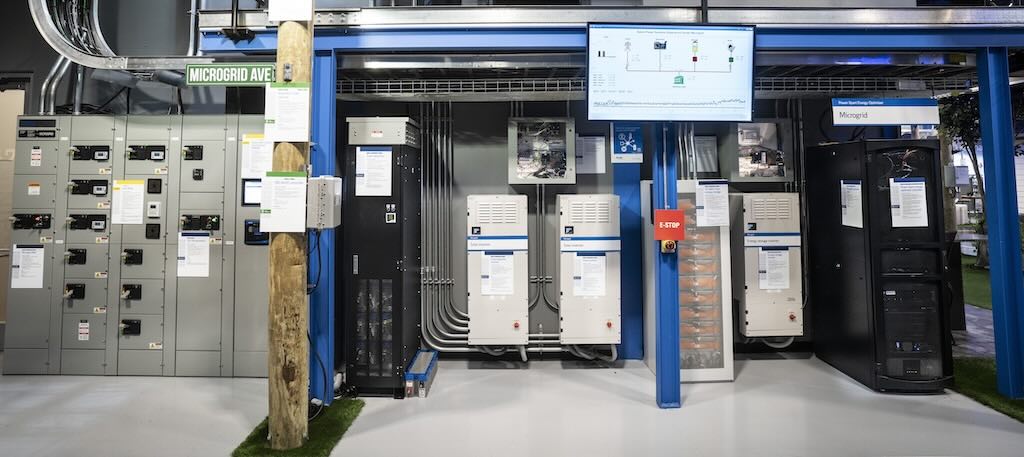Inventory management requires much more than just knowing the numbers. Knowing the relevant formulae is the easy part
Inventory management requires much more than just knowing the numbers. Knowing the relevant formulae is the easy part. Successful inventory management, and the achievement of true inventory optimization, requires a focus on people, policies, procedures, and with that, behaviors. The requirement for improving the management of this interaction is even stronger in a maintenance environment where operations rely on the timely supply of spare parts in order to minimize the impact of equipment failure and provide efficient maintenance activities.
Yet many companies struggle to get this mix right. In a two-part extract from the book Smart Inventory Solutions, Phillip Slater explains this interaction and the results than can be achieved by getting the mix right. In part 2 of this series, Slater reviews a case study that examines some of the issues faced and tools used to successfully implement new policies and procedures. This case study shows how a company went about implementing a system for managing its spare parts inventory. Implementation is the weak link in most programs and understanding the issues and processes is a vital part of achieving success.
The catalyst for action was a corporate takeover and the subsequent need to publish public accounts. For years the companies involved had largely ignored their spare parts management approach, as long as there were no major stockouts no one was interested. However, as a combined entity they needed to ensure, and report, appropriate management and governance of their inventory investment across a network of 25 locations.
In order to move them along the path towards achieving smart inventory solutions, they needed to develop and implement a full range of policies and procedures, including:
- Corporate level policy, requiring board-level approval
- Operational procedures for use on a daily basis
- Stocking policies
- Storeroom organization guidelines
- Storage guidelines
This case study shows the process applied to establish the policies and procedures for materials and inventory management and the issues faced during program implementation. The company needed a materials inventory management system that provided appropriate control and integrated with a new Computerized Maintenance Management System (CMMS). Key questions for this company were:
- Are current inventory arrangements appropriate to the types and value of the inventory?
- What actions, if any, should they take to improve the management and governance of the inventory investment?
An initial review evaluated the company’s capability, accountability, and systems, and identified how and where they needed to improve in order to achieve their goals. The process involved both qualitative and quantitative analyses to ensure that all aspects of inventory management were covered. This review identified a number of challenges and issues that the company needed to address:
- No reliable records of the quantity, quality, or location of spares held. At each location the supervisors and maintenance teams knew where items were but there was no record of the actual quantity or quality of the items.
- No tracking of usage. Parts purchased for a project were routinely used in other areas and vice-versa. As long as the parts were used in the general cost areas for which they were purchased there was no perceived need for further allocation of costs. As a result their cost data was unreliable.
- No standards for storage. There was no formal recognition of environmental effects or even the need for operating a first-in-first-out (FIFO) approach for items with a limited shelf life.
- No identification of critical items. All parts were treated equally, irrespective of the impact of non-availability on operating results.
- Poor control of repairable spares. Items that weren’t needed were repaired and sometimes items sent out for repair were not collected in a timely manner, resulting in operational losses.
- The imminent implementation of a new CMMS meant that they needed a consistent approach for tracking of costs and parts usage.
Development and implementation
Following the initial inventory review, we decided to apply a four-stage process to manage the policy and procedure development and the subsequent implementation (see Figure 1).
Ironically the key was to be clear about each stage so that the company did not go about trying to implement major structural changes too early. Sometimes companies can mistake action for progress and we needed to ensure that approaches developed were both pragmatic and robust before starting to centralize major items and rationalizing inventory holdings. Plus, with a large number of sites to manage we needed to avoid ‘the grapevine’ setting the agenda.
The key activities within the first two stages of this process were:
- Establish a steering committee.
- Review governing accounting standards and their implications.
- Manage internal communications on the project progress and process.
- Develop stocktake processes and documentation.
- Conduct a pilot stocktake, followed by a company-wide stocktake.
- Visit a ‘best practice’ site to review its infrastructure and practices.
- Develop standards for materials storage and storeroom/yard layout.
- Coordinate clean-up of locations
- Develop and document new policies and procedures.
- Approve policies and procedures at board and executive level.
- Review infrastructure needs and develop an initial budget for infrastructure improvements.
- Review CMMS capability and implementation issues.
- Conduct awareness training for key personnel.
The project then focused on training personnel and implementing the relevant policies and procedures across the geographically diverse locations. It was only after the establishment of common and consistent approaches to inventory storage and management that the company could then confidently move onto stages 3 and 4 where the opportunities for centralization and rationalization are reviewed.
As the development of policies and procedures was critical to the program’s success we adopted the ‘swim-lanes’ approach to help simplify the presentation of procedures and clarify the responsibility and sequence for each action. The key feature of the ‘swim-lane’ approach is that each role is allocated a ‘lane’ and by reading cross the page each individual can see what they are required to do and where it fits within the whole process.
Issued during implementation
During the development and implementation of the policies and procedures, we faced a number of relatively common issues. Table 1 summarizes these and the mitigation actions that we undertook.
Results
At the conclusion of Stage 2 the company had established the appropriate systems for management and governance of inventory investment, including:
- Materials Management Policy and Procedures developed and implemented.
- Systems established for recording and tracking materials usage.
- Procedures established for conducting stock takes.
- Standards established for labeling and storage.
- Guidelines established to identify critical and other spares types.
- Guidelines established for establishing stock levels and reordering of materials.
- Guidelines established for improved control of repairable spares.
- CMMS implementation coordinated with materials management improvements.
- Full transparency of stock holdings at all locations established.
- More than 100 staff trained in application of new policies and procedures.
These provided the foundation upon which the centralization and rationalization programs could now commence.
Three key actions underpinned the success of this program:
- Tackling the issues relating to people, processes, policies, and procedures
- Identifying and addressing internal myths and biases
- Formalizing the approach to managing the spare parts store room.
By working to establish a materials and spare parts management system rather than focusing on spare parts optimization this organization has set itself up to achieve long-term success with its materials and spares parts management.
This article is an edited extract from the second edition of the book Smart Inventory Solutions by Philip Slater and published by Industrial Press Inc. You can purchase Smart Inventory Solutions via your local bookstore or online at Amazon.com using the ISBN 978-0-8311-3401-3. For more information please visit www.PhilipSlater.com.



